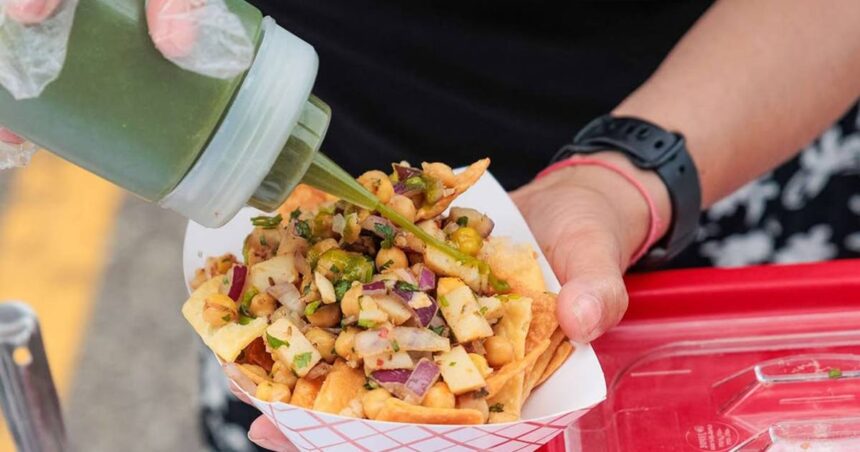Toronto’s culinary scene is about to transform into a global food paradise once again as the International Food Festival returns next month, bringing together our city’s most diverse flavors under one roof. After covering this event for the past five years, I can confidently say this summer’s edition promises to be the most ambitious yet.
Walking through Nathan Phillips Square yesterday during the pre-festival media preview, I caught up with festival organizer Maria Gonzalez while she supervised booth construction. “We’ve expanded to over 120 vendors this year, representing 45 different cuisines,” she told me as we dodged workers setting up colorful canopies. “What makes this festival special is that we’re showcasing Toronto’s own interpretation of global food—dishes created by immigrants who brought their traditions but adapted them using local ingredients.”
The festival, running August 12-21, has become a cornerstone of Toronto’s summer cultural calendar since its inception in 2016. Last year’s event drew approximately 250,000 attendees, and organizers expect that number to increase by at least 15% this year.
Chef Amira Hassan, whose Somali-fusion restaurant “Baasto” in Scarborough has developed a cult following, will be participating for the first time. “Toronto diners are incredibly adventurous,” she explained while letting me sample her signature camel meat sliders with date chutney. “This festival gives smaller restaurants like mine a chance to reach people who might never venture to our neighborhoods.”
Toronto’s Economic Development Office reports that food tourism generates approximately $2.8 billion annually for the city. Events like this festival play a crucial role in that ecosystem by highlighting the city’s culinary diversity and supporting small business growth.
James Chen, owner of “Dumpling Dynasty” in Chinatown, participated in the festival’s inaugural year and has returned every summer since. “My first year, I sold out by 2 p.m. each day,” he recalled. “Now I bring triple the staff and ingredients. This event put my restaurant on the map.”
What distinguishes this festival from similar events is its focus on affordability and accessibility. Dishes are priced between $5-12, allowing visitors to sample widely without breaking the bank. The festival also features a “Culinary Classroom” tent where chefs offer free cooking demonstrations hourly.
New additions this year include a dedicated section for plant-based options and a “Next Generation” area featuring pop-ups from culinary school students. The Toronto Culinary Academy is bringing 15 student-created concepts, providing young chefs valuable real-world experience.
“These students represent Toronto’s food future,” said Academy Director Patricia Morales. “Many of them combine classical techniques with flavors from their family heritage, creating dishes you won’t find anywhere else.”
Having covered Toronto’s food scene for over a decade, I’ve watched our city evolve into one of North America’s most exciting culinary destinations. What makes our food landscape special isn’t just the diversity—it’s the cross-cultural collaboration that happens here.
This spirit is embodied in collaborative dishes being created specifically for the festival. I tasted an intriguing fusion: Ukrainian-Japanese dumplings filled with pork belly and topped with wasabi sour cream, created jointly by chefs from Bloor West Village and East Danforth establishments.
Beyond the food, the festival features live music performances from local artists, cultural dance showcases, and activities for children. The “Little Chefs” tent offers supervised cooking activities for kids aged 4-12, making this a genuinely family-friendly event.
For those concerned about sustainability, festival organizers have partnered with Second Harvest to ensure food waste is minimized. All vendors are required to use compostable serving materials, and sorting stations throughout the grounds will help divert waste from landfills.
Weather has occasionally dampened previous festivals—I still remember the torrential downpour in 2022 that flooded several booths. This year, organizers have invested in improved canopy structures and drainage systems to weather-proof the event.
If you’re planning to attend, my insider tip is to arrive early on weekdays. Weekends typically see crowds peak between 1-4 p.m., with wait times for popular vendors stretching to 30+ minutes. The festival runs daily from 11 a.m. to 10 p.m., with food service ending at 9 p.m.
Admission remains free, though VIP packages offering reserved seating, private tastings, and meet-and-greets with chefs are available for $75 through the festival’s website.
As Toronto continues to define itself as a global culinary destination, this festival stands as a testament to our city’s incredible food story—one written by immigrants, entrepreneurs, and innovators who’ve made this place their home and shared their traditions with all of us.







